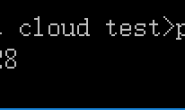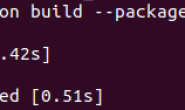python对MySqldb的简单封装
#!/usr/local/python/bin # coding=utf-8 '''Implements a simple database interface Example 0: Create connection: # Set auto commit to false db = DB(False, host = 'x', user = 'x', passwd = 'x', db = 'x') Example 1: Select SQL a. Select the first two rows from ip table: # normal select db.select('select * from ip limit 2') # add a where condition: db.select('select * from ip where name != %s limit 2', ('0')) b. Select all results but get only the first two: db.execute('select * from ip') # get dict rows db.get_rows(2, is_dict = True) Example 2: Insert/Replace SQL a. Insert a new record into ip table: db.insert('ip', {'address':'192.168.0.1', 'name': 'vm-xxx'}) db.commit() b. Insert multi-records into ip table: db.multi_insert('ip', ('address','name'), [('192.168.0.1', 'vm-xxx'), ('192.168.0.2', 'vm-yyy'), ('192.168.0.3', 'vm-zzz')]) db.commit() Example 3: Update SQL a. Update the address of row whose name is vm-xxx: db.update('ip', {'address':'192.168.0.1'}, {'name': 'vm-xxx'}) db.commit() Example 4: Delete SQL a. Delete the row whose name is 'vm-xxx': db.delete('ip', {'name': 'vm-xxx'}) db.commit() ''' # Can be 'Prototype', 'Development', 'Product' __status__ = 'Development' __author__ = 'tuantuan.lv <dangoakchan@foxmail.com>' import sys import MySQLdb from pypet.common import log class DB(): '''A simple database query interface.''' def __init__(self, auto_commit, **kwargs): if 'charset' not in kwargs: kwargs['charset'] = 'utf8' self.conn = MySQLdb.connect(**kwargs) self.cursor = self.conn.cursor() self.autocommit(auto_commit) def execute(self, sql, args = None): return self.cursor.execute(sql, args) def executemany(self, sql, args): '''Execute a multi-row query.''' return self.cursor.executemany(sql, args) def select(self, sql, args = None): self.execute(sql, args) return self.get_rows() def insert(self, table, column_dict): keys = '`,`'.join(column_dict.keys()) values = column_dict.values() placeholder = ','.join([ '%s' for v in column_dict.values() ]) ins_sql = 'INSERT INTO %(table)s (`%(keys)s`) VALUES (%(placeholder)s)' return self.execute(ins_sql % locals(), values) def multi_insert(self, sql, args): '''Execute a multi-row insert, the same as executemany''' return self.cursor.executemany(sql, args) def replace(self, table, column_dict): keys = '`,`'.join(column_dict.keys()) values = column_dict.values() placeholder = ','.join([ '%s' for v in column_dict.values() ]) repl_sql = 'REPLACE INTO %(table)s (`%(keys)s`) VALUES (%(placeholder)s)' return self.execute(repl_sql % locals(), values) def update(self, table, column_dict, cond_dict): set_stmt = ','.join([ '%s=%%s' % k for k in column_dict.keys() ]) cond_stmt = ','.join([ '%s=%%s' % k for k in cond_dict.keys() ]) args = column_dict.values() + cond_dict.values() upd_sql = 'UPDATE %(table)s set %(set_stmt)s where %(cond_stmt)s' return self.execute(upd_sql % locals(), args) def delete(self, table, cond_dict): cond_stmt = ','.join([ '%s=%%s' % k for k in cond_dict.keys() ]) del_sql = 'DELETE FROM %(table)s where %(cond_stmt)s' return self.execute(del_sql % locals(), cond_dict.values()) def get_rows(self, size = None, is_dict = False): if size is None: rows = self.cursor.fetchall() else: rows = self.cursor.fetchmany(size) if rows is None: rows = [] if is_dict: dict_rows = [] dict_keys = [ r[0] for r in self.cursor.description ] for row in rows: print row, dict_keys print zip(dict_keys, row) dict_rows.append(dict(zip(dict_keys, row))) rows = dict_rows return rows def get_rows_num(self): return self.cursor.rowcount def get_mysql_version(self): MySQLdb.get_client_info() def autocommit(self, flag): self.conn.autocommit(flag) def commit(self): '''Commits the current transaction.''' self.conn.commit() def __del__(self): #self.commit() self.close() def close(self): self.cursor.close() self.conn.close() # vim: set expandtab smarttab shiftwidth=4 tabstop=4:




